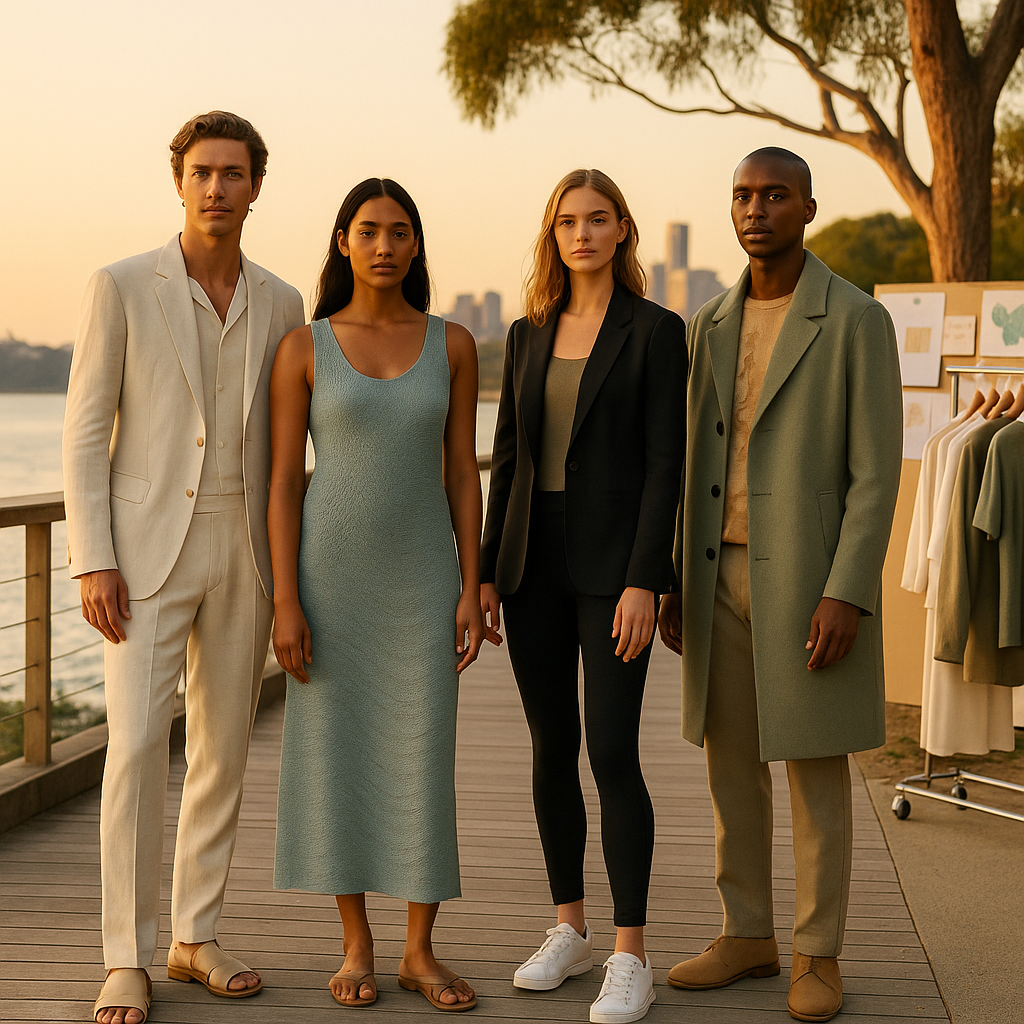Australia’s fashion ascent is anchored in materials and mindset. The country’s merino wool industry, supported by advanced breeding and responsible grazing practices, provides a premium fiber pipeline that powers knitwear and tailored separates for export. Brands such as Country Road, Bassike, and Outland Denim have leaned into provenance, publishing supplier lists, auditing factories, and pushing recycled packaging and low-impact dyes. These moves aren’t marketing garnish; international wholesale partners increasingly require environmental and social due diligence as a condition of purchase.
Design language also channels the landscape. Sunlight, coastline, and desert hues filter into palettes and prints, especially in resort and swim. Zimmermann’s resort-led calendar has proven that a southern-hemisphere brand can set the tone for Northern summers; meanwhile, Spell from Byron Bay refines bohemian motifs with modern fabrication standards. Athleisure groups like P.E Nation and The Upside export fitness culture in color-blocked, performance fabric capsules suited to urban consumers abroad.
Education and entrepreneurship intersect in practical ways. Australian Fashion Week offers sustainability roundtables; TAFE and design schools embed circularity and technical patternmaking into curricula; and incubators mentor founders on unit economics, MOQ negotiations, and compliance. Many labels pilot small capsule runs to verify demand before committing to larger purchase orders, minimizing waste and cash drag.
The retail picture blends digital and physical. Direct-to-consumer channels set the brand tone and capture data, while selective wholesale placements provide credibility and scale. Pop-ups in London, Tokyo, and Los Angeles allow testing of neighborhood-level fit before long leases. Payment innovations—popularized domestically and now global—smooth checkout and fuel higher AOVs for mid-tier contemporary labels.
First Nations designers bring ethical leadership and new narratives, collaborating with artists and ensuring licensing respects communities. Projects with Indigenous-owned enterprises highlight how fashion can redistribute value along the supply chain. In parallel, repair services and take-back programs are gaining ground as consumers ask for longevity. The result is a national industry that treats sustainability not as a trend but as infrastructure—one that helps Australia’s local names compete and endure in the international arena.



